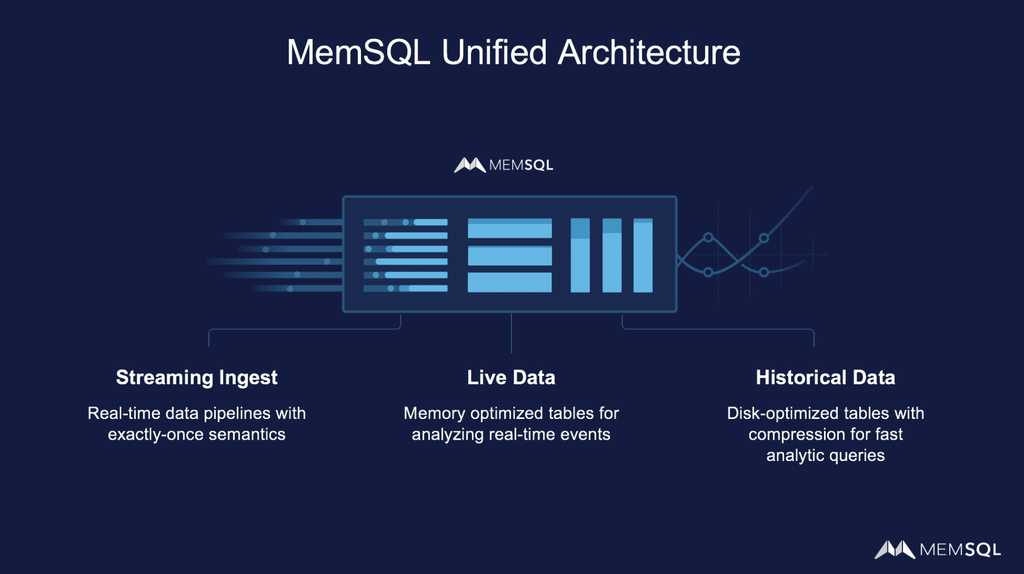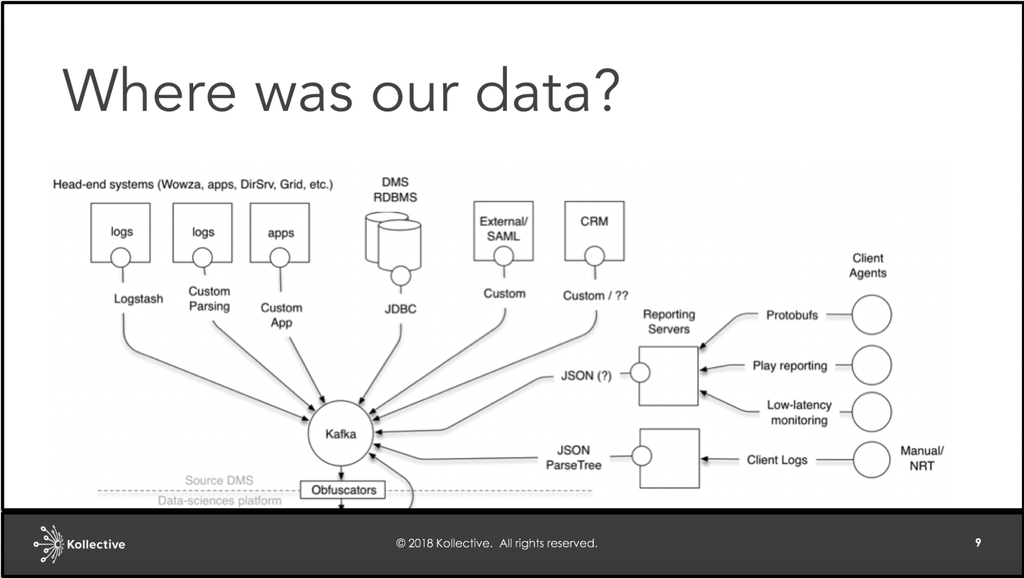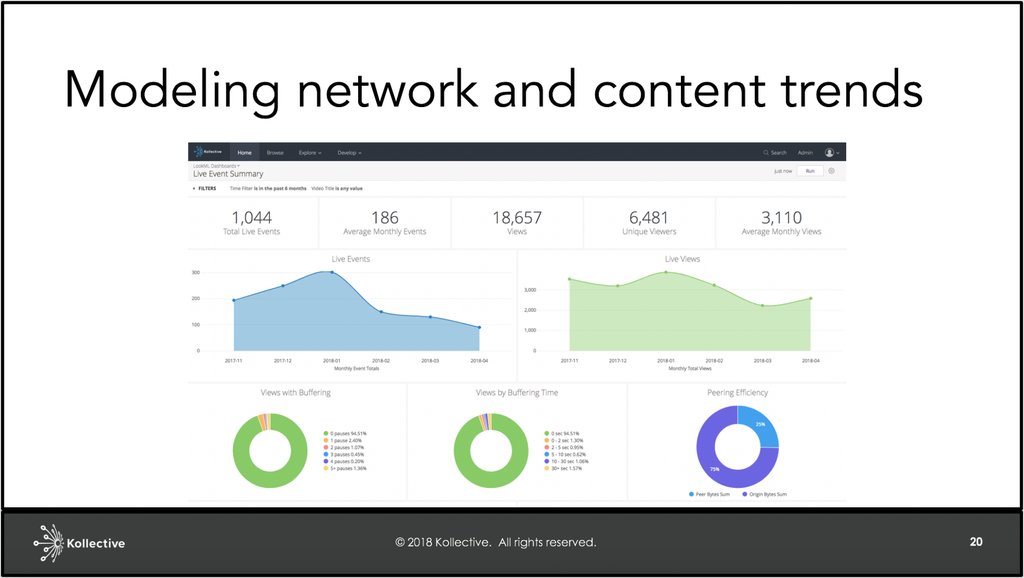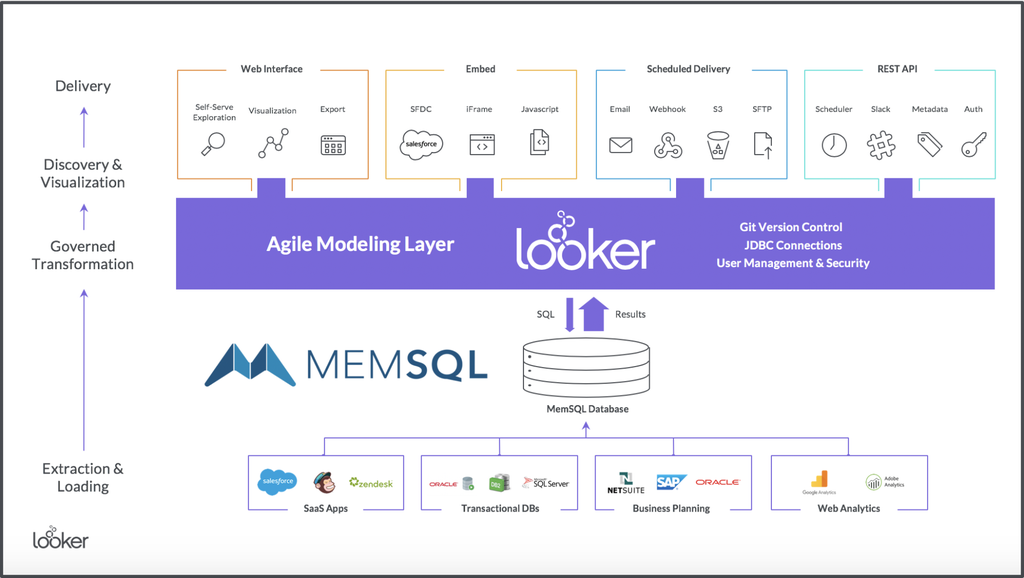
Our webinar brought together three seasoned presenters: Mike Boyarski from SingleStore; Garrett Gladden from Kollective, which helps customers distribute video at enterprise scale; and Erin Franz from leading analytics platform company Looker. They described the creation of a fast, scalable, and affordable solution for media analytics. You can view the webinar recording and download the presentation slides here.
A few months ago, SingleStore presented a webinar on building a media analytics solution. We’re taking the time now to highlight some of the key points from that webinar, both to share valuable information here and to encourage you to view the webinar.
Today, enterprises are finding themselves in the video delivery business. They need to deliver a fast, flexible, and reliable video experience for customers, employees, suppliers, and partners. And they need analytics.
Once upon a time, television broadcasters had only Nielsen ratings to help them estimate who was watching. Today, digital delivery promises the ability to have much more useful and detailed metrics as to who watches what, and for how long, and with what messages delivered. However, delivering a YouTube-like experience to users, and a fast, flexible, and rich analytics environment for internal use, is still more than a notion.
Together, SingleStore can move video data internally; Kollective can help deliver it to users and generate reams of statistics; and Looker can make the data easy to report on, analyze, and explore.
We offer some highlights in this blog post. To get the full story, you can view the webinar recording and download the presentation slides here.
How SingleStore Moves Data
SingleStore is the best scalable relational database, top-ranked as both a general purpose database and a database for data warehousing. The company, which is growing fast, is ranked as a Challenger in the Gartner Magic Quadrant for Data Management Solutions, with a solid ability to execute and steadily increasing completeness of vision.
SingleStore delivers, together, several things that are usually only available separately: speed, scalability, and SQL. Traditional relational databases aren’t speedy and aren’t scalable. NoSQL databases are speedy and scalable, but they’re not relational; therefore, as the name implies, SQL is not an option. The lack of relational structure and of SQL support for queries is a stopper for most analytics use cases.

With SingleStore, Kollective can drive live data into a SingleStore-based operational data store. Looker can deliver a combination of live and historical data out, with otherwise unachievable speed and reliability. The whole architecture is fully scalable – no sudden cliffs to climb (or to fall off of) when an enterprise needs more capability.
How Kollective Delivers Data
Kollective has a simple approach to developing and delivering their offering: put the customer first. And clients who were delivering data need three simple things:
- Smarter networks. Delivering data reliably and scalably requires a fast, flexible network. Kollective customers need to know about bottlenecks in advance so operations can deliver a richly immersive experience.
- Scoreboards and dashboards. Kollective customers want to know that video is being delivered effectively, and where problems are cropping up, both in real time and retrospectively.
- Baselines and averages. When a Kollective customer is getting good at video delivery, they want to see their numbers improving. When a Kollective customer gets good at video delivery, they want to keep it up, while managing costs.
Kollective delivers all this across a varied landscape of incoming operational and business data. Using Kafka as a unified messaging solution, they gather data from a wide range of inputs.

When customers reach out to Kollective, they tend to have slow, static, inflexible architecture for incoming data. There’s little in the way of a user experience.
How to bring all this together? Kollectiv often uses SingleStore for data aggregation and delivery and Looker for a rich user experience in reporting, analytics, and exploration of data.

Looker Helps Bring Intelligence to Business
Legacy solutions often try to do too much while running off of an out-of-date combination of technological underpinnings. Looker takes full advantage of the best of modern technologies to deliver exactly what users need: the ability to easily explore, analyze, and share real-time business analytics.
Looker does not make their customers go through yet another data transformation process before their data is deemed ready for analytics. They operate directly against the user’s database.
Of course, it helps if that underlying database is fast, scalable, and relational – three qualities that are not usually found together, but that are unified in SingleStore.

With Looker and SingleStore running together, all data transformation can be accomplished in the SingleStore database. Looker leverages SingleStore’s fast, in-memory performance and its ability to stay constantly updated with the latest data.
Looker, in turn, makes the data stored in SingleStore available to users in a customized and user-friendly way. Because SingleStore combines transactions and analytics support, it serves as a single source of truth for users.
The LookML modeling layer can directly leverage newer, advanced SingleStore functionality such as geospatial functions and the ability to store and query semi-structured JSON and Avro data. Drawing on SingleStore data, Looker also serves as a connecting point for machine learning and AI.
Conclusion
SingleStore, Kollective, and Looker each deliver novel, up-to-date solutions based on the latest advances in technology. Together, they deliver a robust toolset for video data delivery and analytics. You can view the webinar recording and download the presentation slides here.










